

Understanding the Basics of ICT
What exactly is Low Voltage? Telecom? IT Design? LV? Telecommunications? And what do all these terms entail? Regarding building design, we group all these older legacy titles under the current industry title: Information and Communications Technology or ICT.
While working on ICT designs at Morrison-Maierle, I am routinely asked questions about the various components of our designs. To help you understand the ICT field and how it might help on your next project, I’ve compiled a list of the most frequently asked questions about the Basics of ICT.
Why don’t we use the terms low voltage (LV) or telecom/telecommunications anymore?
Low voltage (or LV), telecom, and telecommunications are other names for ICT. They are no longer best-practices terms because they are vague, and some low-voltage equipment, like fire alarms, lighting controls, and dimmers, are not part of ICT.
Is there a difference between IT (Information Technology) and ICT?
One component of IT is computing technology, which includes networks and software. Because of this, most people think of IT as the people you call to fix their computers, which is very different from ICT design.
ICT design is like designing an interstate highway system. ICT is the physical road (concrete/asphalt), and IT is like populating that interstate with exit ramps, speed limits, police officers, etc. These items are analogous to different firewalls, quality of services, and applications that IT staff regulate and maintain.
What’s the difference between data, paging, and security?
ICT includes the data, paging, and (some aspects of) security in a building. Let’s break each of these down a little further.
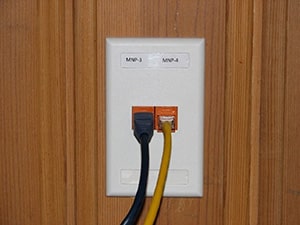 | DataThis includes the Wi-Fi and wired work area outlets (WAO). Essentially, data is the connectivity in a building. Need to connect to the internet? Company servers? This is what the data design covers. |
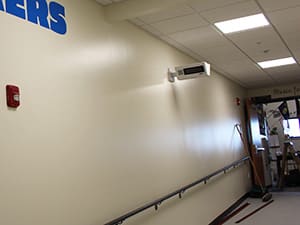 | PagingSo, what comes in a paging or public address system? This includes all the speakers in a building. In a school, this may be classroom clock-speaker combos, prominent acoustical speakers in the gym, or a call station (aka mic station) in the principal’s office or reception area. Playgrounds often have prominent directional horn speakers in their paging system designs. |
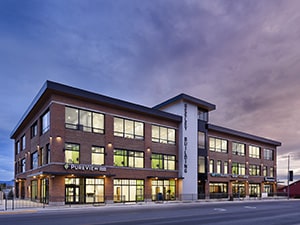 | SecuritySecurity systems include any cameras, access-controlled doors, and intrusion detection systems (IDS) in a building. In a multi-use building with various tenants, there may be motion detectors throughout, cameras in the first-floor stores, or card readers for tenants to access the parking garage and entryways. Security systems also may have tamper switches for electrical panels and telecom room cabinets, which serve as a lockdown for public spaces. |
What physically goes into a building when it comes to ICT design?
Three main components go into a building’s ICT system: telecom rooms (TRs), backbone cabling, and horizontal cabling. As we did above, let’s break down each of these a little further.
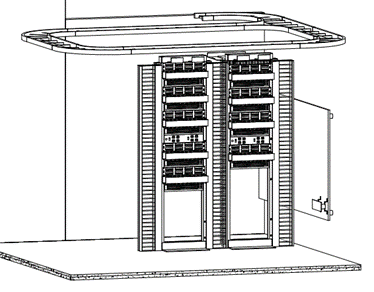
Telecom Room (TR)
A telecom room has many different names for the same thing. We’ve heard server room, data room, IT room, main distribution frame (MDF), intermediate distribution frame (IDF), or building distribution facilities (BDF) used interchangeably. Regardless of what you call it, this room lies in the heart of a building.
Technically, a TR feeds a single floor or tenant while an equipment room (ER) serves a building (and can perform any task a TR performs). For this introductory article, I am going to over-simplify and use TR when referring to any telecommunication space.
A TR provides connectivity to” the rest of the building. This means every work area outlet, wireless access point, camera, and speaker has a cable between the device and the TR. Because TRs provide connectivity throughout the building, the pathways surrounding them are critical. Placing a TR between an elevator and a stairway limits its functionality. Stacking TRs on adjacent floors or locating them next to accessible ceiling space gives designers a myriad of pathway options.
Depending on the size of your building, you may have multiple TRs. As a general guideline, each building floor should have its own TR, which can feed up to 10,000 sq. ft.
It is best practice to centralize TRs on floor plans as much as possible. Because of cable length restrictions, central locations allow them to provide connectivity to the most floor space (versus creating additional TRs). As a rule of thumb, size your TR to be 10 ft. x 10 ft. for most buildings, but smaller buildings can usually get away with a 10 ft. x 8 ft. room.
A TR needs space for the network equipment, cable terminations, patch panels, racks, and any active equipment an owner/tenant may use.
Cabling
There are two types of cabling in a building. Backbone cabling connects TRs, and horizontal cabling connects individual devices back to a TR.
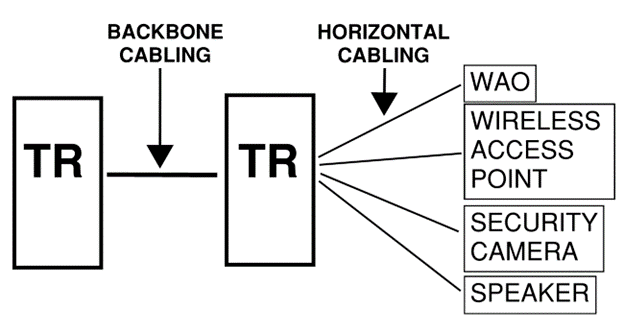
Think of cabling as your state’s road system. Backbone cabling between TRs is like an interstate highway. They handle vast amounts of data at high speeds, but they are also expensive and, once put in, are hard to relocate.
Horizontal cabling is like your city roads. These roads are shorter, twist and turn through neighborhoods, and are much easier to change and tweak than an interstate. Data backbone cabling is typically fiber optic cabling, while legacy voice backbone cabling is usually copper. Horizontal cabling is almost always copper cabling; today, most buildings use a combination of Category 6 and 6A cabling.
While the core idea of horizontal cabling is simple—run a cable between each device and the nearest TR—there are a few factors that can make horizontal cabling more complicated.
First, horizontal category cabling (no matter what number: 6, 6A, 5e, 3, etc.) has a maximum distance of 90 meters or 295 ft.

ICT design is also impacted by the constant changes and updates in the tech world. While buildings last a long time, the technology in them does not. For example, Category 6 cabling was first released in 2002. While it is still the standard for many devices today, it is starting to be outpaced in some applications.
As the technology in our world advances, we know no one wants their building to be hamstrung by old, outdated cables (think slow wi-fi). This means you can’t bury your ICT cabling inside a wall or ceiling, never to be seen again. It must be accessible to be updated when the time comes (it also allows for easy expansion, remodeling, or troubleshooting).
To help work around these updates, ICT designers love seeing accessible ceiling tiles (ACT) in reflected ceiling plans. We may not know the types of cabling that will make up horizontal cabling in the future, but we do know that proper pathway planning and allocation will allow an easy transition to these future technologies.
But what happens when you don’t have accessible ceiling space? ICT design, when addressed early in the project design, can offer architects several options for pathways that are accessible but don’t detract from the design integrity of the building. This typically includes some combination of conduit, cable tray, and junction boxes.
Let’s Talk More
ICT can be confusing even to the most experienced and well-versed design teams. From learning the basic terminology to creating custom designs that work seamlessly into your project, it is worthwhile to spend some time planning for this critical—and ever-changing aspect—of your next project.
Ready to talk about your next ICT project? Learn more about our ICT services today.
